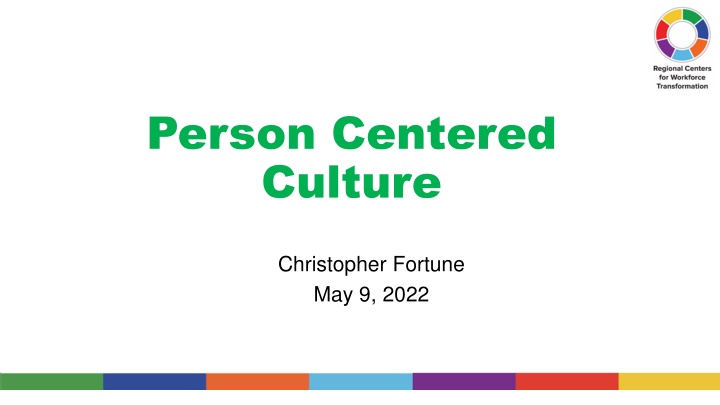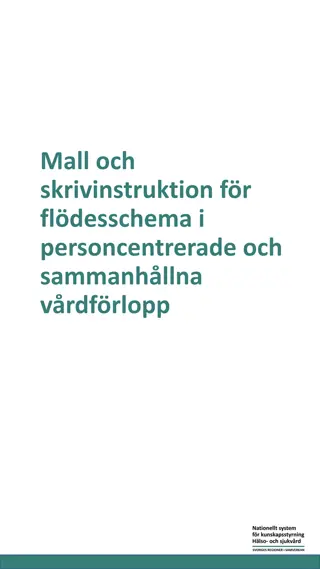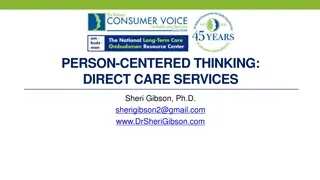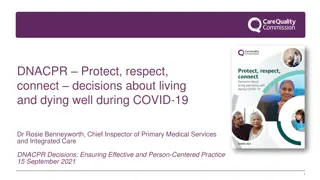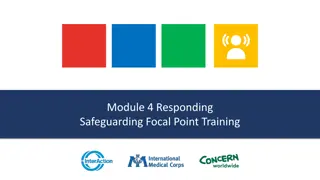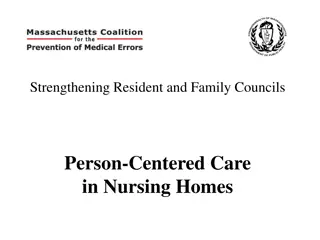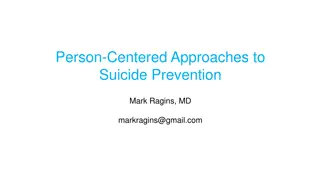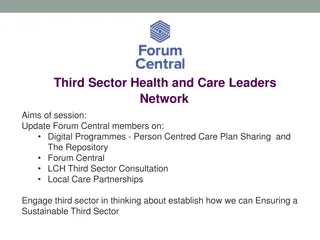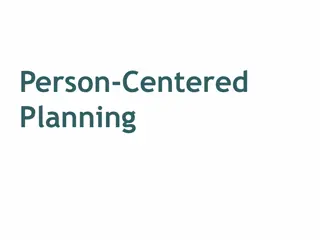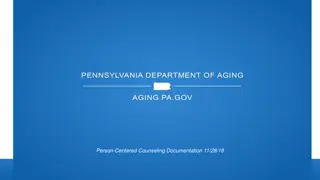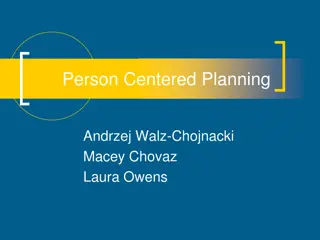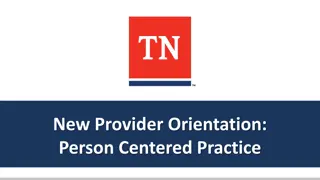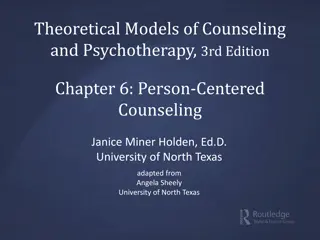Person-Centered Culture
Explore the historical journey of caring for individuals with disabilities, from institutionalization to deinstitutionalization and the shift towards community integration. Understand the challenges and intentions behind these transitions, highlighting the shift from the custodial model to a more person-centered approach in supporting people with disabilities.
Download Presentation

Please find below an Image/Link to download the presentation.
The content on the website is provided AS IS for your information and personal use only. It may not be sold, licensed, or shared on other websites without obtaining consent from the author.If you encounter any issues during the download, it is possible that the publisher has removed the file from their server.
You are allowed to download the files provided on this website for personal or commercial use, subject to the condition that they are used lawfully. All files are the property of their respective owners.
The content on the website is provided AS IS for your information and personal use only. It may not be sold, licensed, or shared on other websites without obtaining consent from the author.
E N D
Presentation Transcript
Person Centered Culture Christopher Fortune May 9, 2022
Organizational Culture What any organization actually does vs what it says it believes Kind of an organizational walk the talk
History of Serving People with Developmental Disabilities Willowbrook Geraldo Rivera Letchworth Village
THINGS ARE NOT AS THEY WERE Christmas in Purgatory - Burton Blatt and Fred Kaplan; written and photographed in 1965
Deinstitutionalization The intention of everyone working to make deinstitutionalization a reality was that people leaving the institution would new have the opportunity to live a life in the community Group homes and day programs were developed in the community with the intention of people having the opportunity to participate in community life While intentions were good, the result was not People with disabilities still ended up being segregated from mainstream society People lived in group homes, took special transportation to separate day programs The illustration on the right shows that even though our intentions were good we created mini-institutions and people led segregated lives
IF WE WOULDNT TOLERATE THIS .. .
The Custodial Model of Supporting People with Disabilities The custodial model really emerged during the deinstitutionalization period. People were supported outside the institution but were not fostered to become part of the community The emphasis was to take care of the people rather than look at the overall quality of life Skill development centered around self care, household chores and specific tasks Development of relationships and community roles were not a priority The picture on the right illustrates the role at this time. A good days work was done when everyone had a shower, used the bathroom and was safely in bed
The Support Model As the role of the staff person evolved towards the standard of the DSP we moved from taking care of people to supporting people to lead the life of their choice The role of the DSP moved from the system having total control over the person to handing control over to them Rather than caregivers we became teachers, mentors and supporters As the gentlemen on the right is pointing out, the relationship between the person and the DSP has evolved into a partnership and moved away from the caregiver role
Values and Person Centered Principles Values Person Centered Principles Dignity Respect Equal Citizenship The dignity of Risk Family and Friends Build on Capacities Freedom to make choices Ability to exert control over one s life Community Membership and Inclusion Relationships Positive Routines Person First Language
Choice Conversation What choices have you already made today prior to this workshop starting?
Choice Routine Choices Coffee or Tea When to Eat What to Eat What to Watch What to Wear Bedtime Snacks Soda Not so Routine Choices Select a Doctor Apply for a Job Where to live Join a Church Join a Gym Go to School
Think about what is Important for and Important to the person Michael Smull
Control Control Scenarios
Areas of Control Money $$ Routines Community Membership Friends/Relationships When/How Alone/Together
Guardianship vs Supported Decision Making
Capacity Vs Deficit Based Thinking Most Lifeplans focus on Deficits Clean Bedroom Laundry Cooking Social Skills Behavior Needs to be more of a focus on Building upon Capacities
Capacity Based Thinking Capacity Based Thinking The system that supports people with disabilities often focuses on what people can t do rather than focusing on their capacities People with disabilities spend time working on meaningless goals, often that they did not choose, in the name of skill development and independence We all like to be recognized for what we are good at, it is a positive thing to foster the skills and abilities we all have People with disabilities are no different Many are organized, knowledgeable in areas, funny, talented, social and gifted Planning for people needs to take these capacities into account DSPs are an invaluable source of this information
Capacity Scenarios Person with a Severe Reputation Carmella Person with a Severe Reputation #2
Getting Ready People with disabilities may spend their whole live getting ready for the next step in their lives Metaphor A Goldfish is not a Cat
Person First Language You will hear the people we support referred to in many different ways Some ways are not respectful and do not promote equal citizenship Some of the terms you may hear are client, consumer, resident, individuals, the guys, my guys .. We need to refer to them as people first: The people you work with The people who live at 20 Smith Street We should also not refer to a person s disability first i.e. That Autistic Person . Person first language refers to the person first i.e. He is a Person with Autism
Language is a Reflection of What we Believe The difference between the right word and the almost right word is the difference between lightning and the lightning bug. Mark Twain
The Language of us and them The way we talk can communicate RESPECT or create Us & Them .. We will now move to another Power Point to Complete an activity on Language
Morning Routine Exercise On a peace of paper write down your morning routine from the moment you wake up in the morning till you leave your house or start work. Please write as bullets with approximate times. Please do not share anything you feel is too personal or anything that we should not hear about.
Other Routines Arriving a work Getting home in the afternoon Evening Routines
Christopher Fortune RCWT cfortuneconsulting@gmail.com
